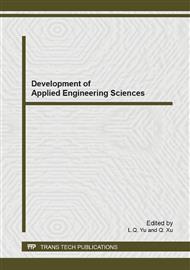p.232
p.236
p.240
p.244
p.248
p.253
p.258
p.264
p.270
A Fuzzy Predictive Controlling Method of Fermentation Tank Temperature
Abstract:
Liquor fermentation is a complex biochemical process, to control the temperature of fermentation tank fastly and accurately in the process can improve the efficiency and quality of fermentation .Because of the nonlinear and time lag of the process, meanwhile the conventional PID control and is difficult to solve practical problems in precise control,So this paper puts forward a fuzzy predictive controlling method, by combining the advantages of fuzzy control and predictive control for big lag, nonlinear fermentation systems.After using MATLAB to make comparative data simulation, the result shows that the proposed design method can better dynamic and static characteristics of both system, with static characteristic small overshoot, fast response, high steady precision, etc, can be useful in industrial control systems.
Info:
Periodical:
Pages:
248-252
Citation:
Online since:
October 2014
Authors:
Price:
Сopyright:
© 2014 Trans Tech Publications Ltd. All Rights Reserved
Share:
Citation:


